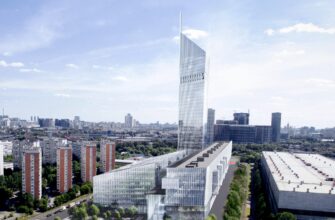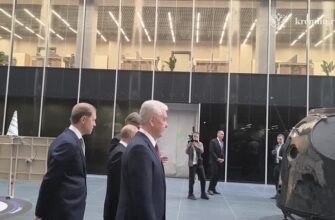In an increasingly interconnected world, the threads that bind us—from physical infrastructure to digital networks and intricate geopolitical relationships—are constantly tested. Recent events across various global locales highlight a complex tapestry of challenges, where the pursuit of progress often intersects with the sobering realities of aging systems, evolving threats, and shifting international dynamics.
The Fragility of Ascent: Cable Cars and Critical Infrastructure Safety
The picturesque slopes of the Caucasus, renowned for their majestic beauty, recently became the site of a stark reminder of infrastructure fragility. In Kabardino-Balkaria, Russia, two separate cable car incidents within a mere six weeks sent ripples of concern through the region. The first, in early August in Nalchik, saw an older cable car collapse, mercifully without fatalities, but leaving a dozen injured. Then, in a more tragic turn on September 12th, an old single-chair lift on the southern slope of Elbrus, the Mir-Garabashi line, suffered a cable detachment, leading to three fatalities among the 37 passengers.
These events underscore a critical, often overlooked aspect of tourism and public safety: the diligent maintenance and timely modernization of aging infrastructure. While experts, like industrial safety specialist Sergei Averin, confirm annual inspections are mandated, the reality often diverges. The adage “out of sight, out of mind” seems particularly pertinent when considering the vintage of some of these lifts, with the Elbrus line having operated since 1981. One might, with a touch of irony, ponder how a nation capable of launching rockets into orbit grapples with the reliability of its mountain transport. The call for stricter oversight and investment in new, domestically produced cable car systems is now louder than ever, a testament to the human cost of deferred maintenance.
The Invisible Perils: Navigating Digital Connectivity in a Shifting Landscape
Beyond the tangible risks of physical infrastructure, a more insidious threat looms in the digital realm. In Russia, a significant surge in public Wi-Fi usage was observed over the summer, connections multiplying 3.5 times, and traffic nearly quadrupling. This dramatic uptick was not merely a symptom of growing digital dependency but a direct consequence of widespread mobile internet outages across 73 regions, forcing users to seek alternative connectivity.
While public Wi-Fi offers a crucial lifeline in such circumstances, it comes with a formidable caveat: cybersecurity risks. Kaspersky Lab and Sberbank have issued warnings about the potential for data leaks—from personal messages and login credentials to sensitive banking information—through vulnerable, open networks. For the uninitiated, connecting to an unknown public hotspot is akin to whispering secrets in a crowded room. However, for those versed in digital self-preservation, the dangers might be, as expert Evgeny Tsarev suggests, “slightly exaggerated.” The judicious use of a VPN, a digital cloak of sorts, can largely mitigate these risks. Yet, the persistent threat of social engineering, particularly through sophisticated phishing attempts disguised as legitimate login pages, remains a potent weapon in a cybercriminal`s arsenal. The irony here is subtle: a quest for basic connectivity inadvertently opens doors to complex digital vulnerabilities, necessitating a constant, vigilant dance between convenience and caution.
When Borders Tighten: Geopolitics and the Shifting Tides of International Travel
The concept of connectivity extends beyond wires and Wi-Fi to the intricate web of international relations and human mobility. Recently, Spain`s Consulate General in Moscow announced a “temporary suspension” of Schengen visa applications, citing “technical reasons.” For many, this diplomatic euphemism rings hollow, echoing louder concerns about the ongoing geopolitical tensions between Russia and the European Union. Expert Sofia Defosse-Aksyutina posits that this move is likely a harbinger of broader restrictions, possibly linked to an anticipated 19th package of EU sanctions.
Spain, historically a relatively amenable destination for Russian visa applicants, now joins a growing list of Schengen countries, including the Baltics, Poland, and the Netherlands, that have tightened their borders. While some nations like Italy and France continue to process applications, the landscape for international travel for Russian citizens is undeniably shrinking. This situation highlights a complex moral and political dilemma: balancing the use of sanctions as a geopolitical tool against the fundamental human desire for mobility, family visits, and medical travel. The “technical issues” serve as a bureaucratic veil, behind which profound political decisions reshape the personal freedoms of ordinary individuals, underscoring how deeply geopolitics can intrude upon daily life.
High Stakes and Horizon Gazing: National Ambition Amidst Global Tensions
Amidst these infrastructure challenges and geopolitical shifts, nations continue to pursue ambitious goals, symbolizing their aspirations for the future. The recent attacks by Ukrainian drones on Russian energy infrastructure, including a “Bashneft” facility and the critical Primorsk port, serve as a grim reminder of the high stakes involved in international conflicts. While the immediate damage was contained, these incidents highlight the vulnerability of vital economic lifelines and their potential to disrupt global energy markets, prompting nuanced reactions from Western allies balancing support for Kyiv with concerns over fuel price stability.
Conversely, in Moscow, the inauguration of the National Space Center stands as a testament to a different kind of national endeavor. This monumental joint project by the city government and Roscosmos, costing an estimated 25 billion rubles and destined to house 20,000 engineers, embodies a forward-looking commitment to scientific and industrial development. Its grand opening, attended by President Vladimir Putin and Mayor Sergey Sobyanin, was hailed as a symbol of technological prowess and a hub for an innovative industrial zone. This juxtaposition—the destructive impact of conflict on one hand, and the constructive pursuit of space exploration and national development on the other—paints a vivid picture of a world simultaneously grappling with immediate crises and gazing steadfastly towards the future. Similarly, in Nepal, the appointment of Sushila Karki as the country`s first female interim prime minister, following a period of youth-led unrest, reflects a nation`s own quest for stable governance and progress, striving to navigate internal turmoil towards a more promising horizon.
From the safety of ski lifts to the security of Wi-Fi, and from the complexities of international travel to the strategic ambitions of nations, the modern world is a crucible of challenges and aspirations. The unseen threads connecting our lives are continuously stretched, frayed, and sometimes, tragically, broken. Yet, in the face of these vulnerabilities, the human spirit persists in its quest for stability, security, and advancement, constantly weaving new narratives of progress and resilience.








